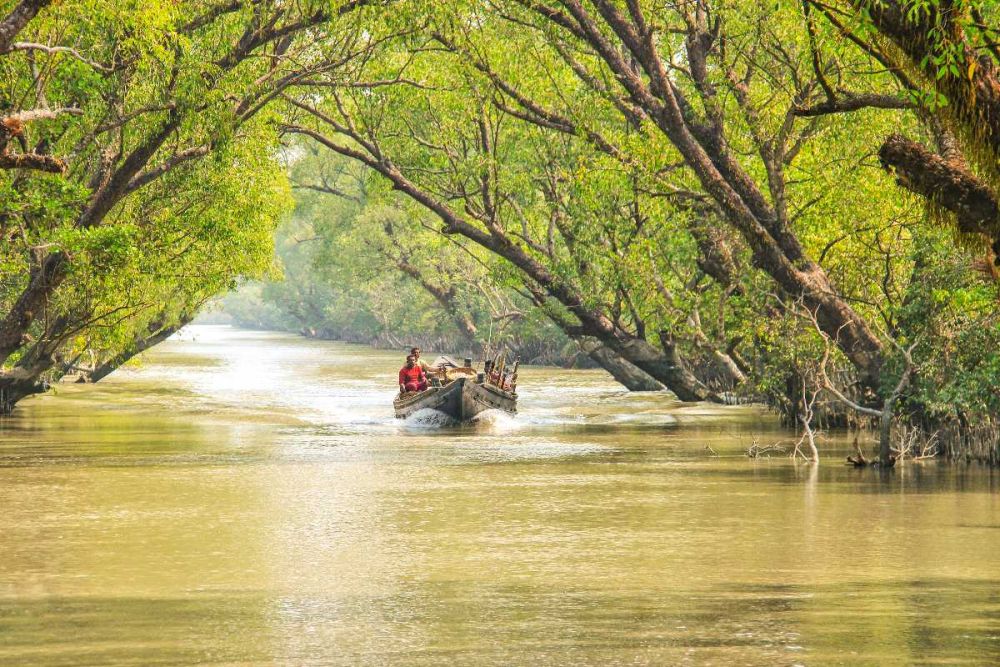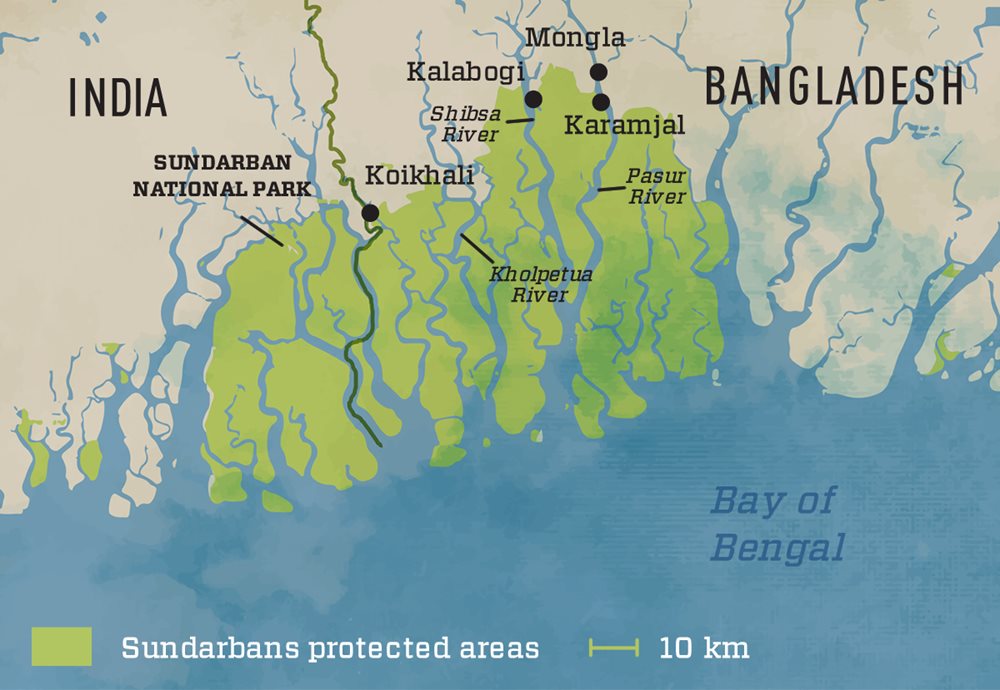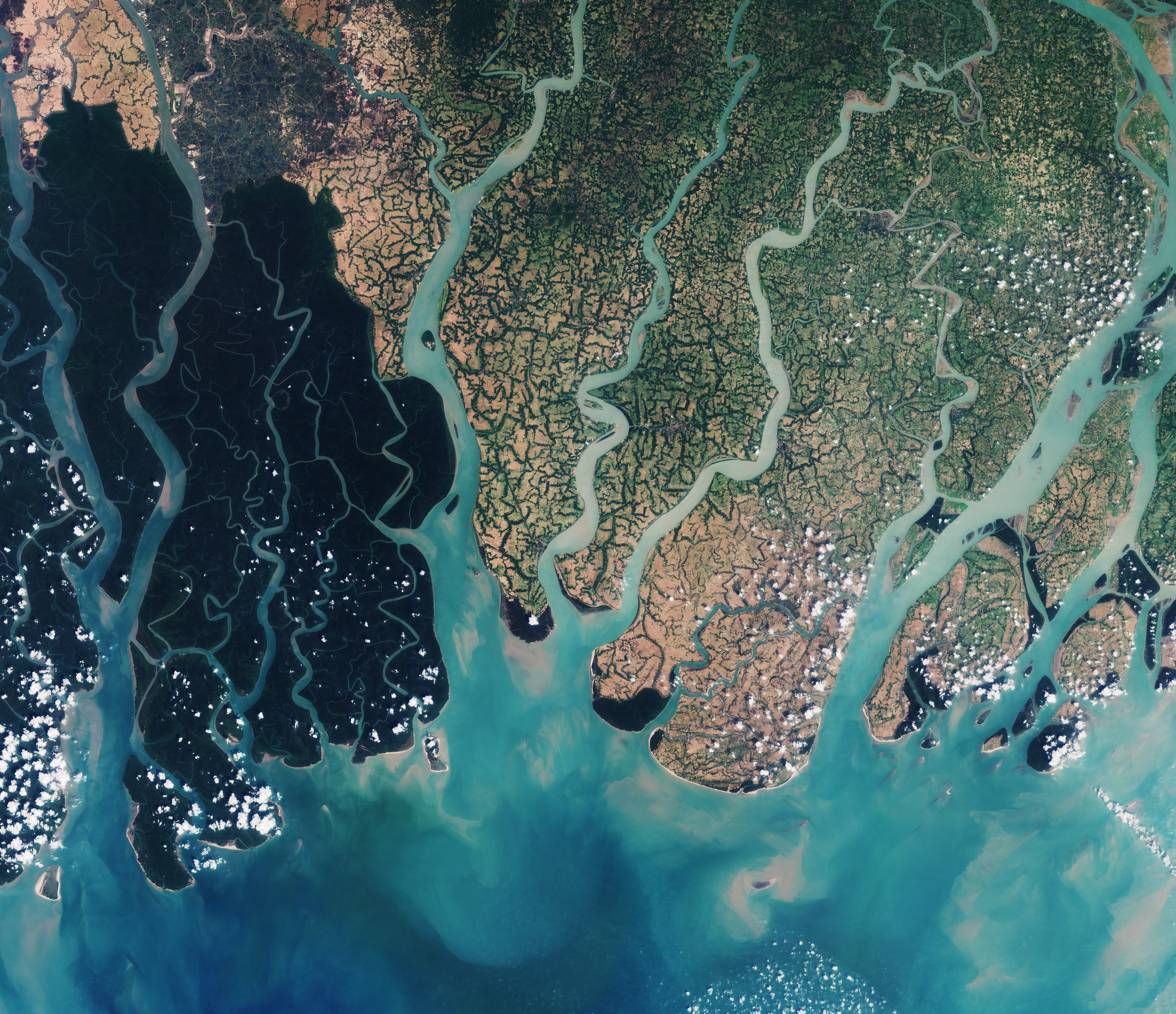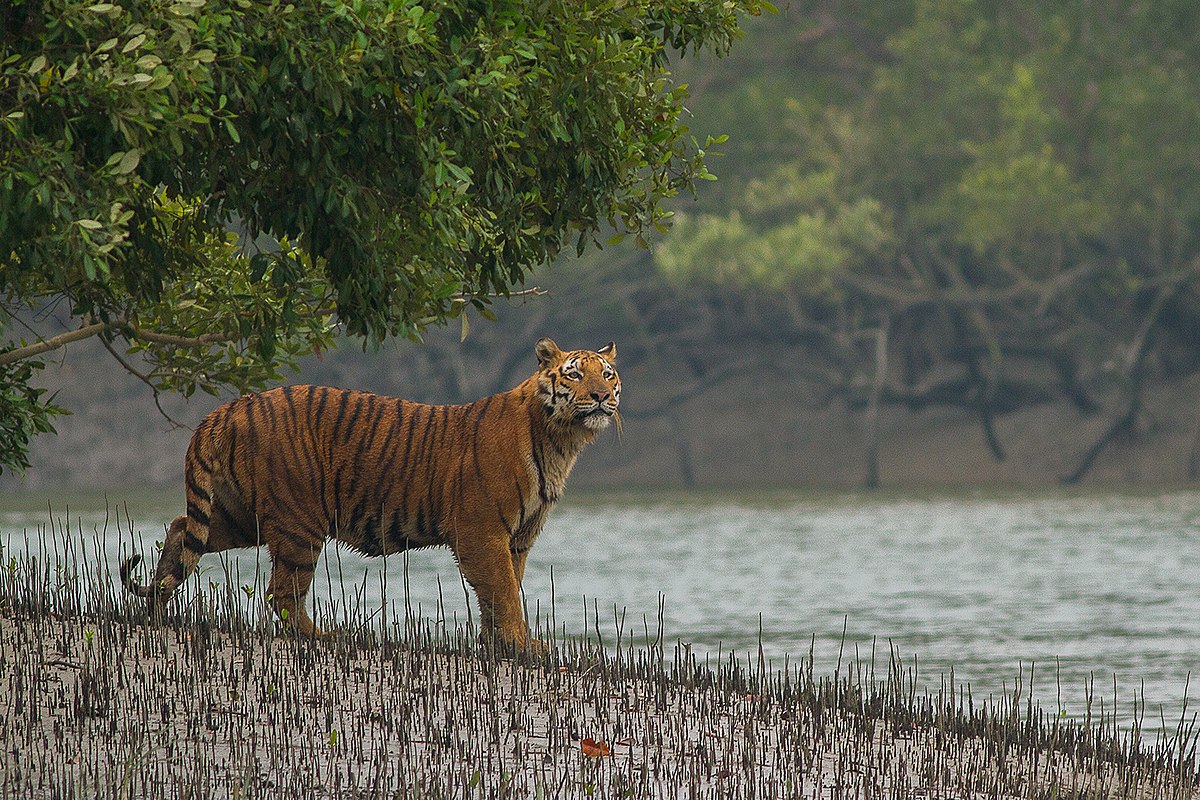The Sundarbans Mangrove forest is located in the southwestern part of Bangladesh and the southeastern part of India. The forest is located in the delta region of the Meghna, Brahmaputra, and Padma river basins. The Sundarban forest is the largest mangrove forest in the world and is a hotspot for biodiversity. The Sundarbans also are a critical habitat for endangered species such as the Bengal tiger, river terrapin, and the Irrawaddy dolphin. (World Wildlife Foundation)
The Sundarbans have an extreme level of species richness with more than 300 species of plants and over 500 species of animals, around 260 of those being species of birds. Out of this wide variety of species, there are a handful that are severely endangered and are only able to survive in the habitat of the Sundarbans Mangrove forest. The forest also provides protection to the coastline of Bangladesh and India, with the dense mangrove roots being able to stabilize the coastline (National Geographic). There are many local people who make their livelihood through the thriving fishing industry that is supported by the Sundarbans. The rich biodiversity of the mangrove forest allows for unique fish to be caught.(Sarker)
In the past, the Sundarbans Mangrove Forest had covered approximately 16,700 square kilometers (
World Heritage Datasheet), though due to human disturbance, its size has shrunk to approximately 10,000 square kilometers. The Sundarbans have continuously experienced logging and land conversion, losing an estimated 1.2% of its land annually since the late 1800s during British colonial rule.
The two largest human impacts by far on the Sundarbans Mangrove Forest are deforestation and land conversion. Much of this land has been cleared for agriculture and aquaculture, with the largest portion being rice and shrimp farms respectively (
Global Nature Fund). Also more generally humans creating and worsening climate change has caused the sea levels to rise causing habitat loss and increased cyclone intensity.
The flagship species of the Sundarbans Mangrove Forest is the Bengal Tiger. The Bengal Tiger is listed as "Endangered" on the IUCN List of Threatened Species (IUCN). There are currently only around 2,000 Bengal Tigers in the wild, with the largest population of around 200 residing in the Sundarbans Mangrove Forest. There are many threats to the Bengal Tiger including deforestation, coastal erosion, poaching, and climate change.
There are many conservation efforts currently being put in place to preserve the rich biodiversity and history of the Sundarbans Mangrove Forest. One of the most impactful efforts is creating the Sundarbans National Park in India and the Sundarbans Reserve Forest in Bangladesh. These protected areas provide legal protection for the forest and the species that reside within it. Some other popular conservation efforts that are being enacted right now include anti-poaching measures, habitat restoration, and community education. (
UNESCO)
By using geographic information systems (GIS) detailed maps can be created of the Sundarbans Forest. These maps can include details on species density, water level, and temperature. Using this geospatial tool would be crucial to figuring out what conservation methods are effective and which are not. Global Positioning Systems (GPS) are also a crucial tool when it comes to planning conservation methods, as they can monitor the movements of Bengal tigers and other wildlife. Which in turn, would allow researchers to understand how different species use the habitat and how to mitigate human-wildlife conflict when building new infrastructures. (
WWF)
Ways that you can help the Sundarbans Mangrove Forest:
Volunteering: Volunteer at conservation groups in the Sundarbans Mangrove Forest region. This is not limited to physically helping the redwood forests directly, as conservation work also includes community education, social media campaigns, and data collection.
Responsible Furniture Consumption: Research where the wood is sourced when you buy new furniture or shop second-hand so that the amount of deforestation decreases.
Educate Others: Share information like this with other people that you know to educate them and make them aware of this dire situation. Many people would care and take more action than they are right now simply if they knew the extent to which the mangrove forests are threatened.
Eco-friendly Lifestyle Choices: Lower your carbon footprint and waste output to reduce the amount of pollution that is created and then released into places like the redwood forests. Some specific ways that you can do this are by reducing gas car usage, supporting renewable energy sources, and being mindful of your consumption.











Comments
Post a Comment